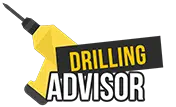In your maintenance work around the home or the workshop, one of the tasks that you are likely to be doing is tightening and unfastening threaded connections. When faced with such tasks, an impact wrench is a tool that would get the job done with minimum complications.
However, without the torque, this device is of no use since this force is what gives it the capability to handle various tasks ahead of it. So, it is crucial that you get the right amount of torque that would not end up damaging whatever you are working on.
In this article, we shall discuss the torque that comes with each impact wrench and the amount that you need for each application.
But first things first.
Why is Torque Important for an Impact Wrench?
It is vital that you get the right torque, especially when dealing with light metal surfaces, whereby failure to set the correct torque would leave you with dents and scratches. So, the perfect torque would provide the balanced rotation needed to tighten screws without leaving them too tight or loose.
And with the required torque, you no longer have to think about surface damage which is not something that you were looking forward to.
Also Read: https://drillingadvisor.org/how-much-torque-do-i-need-in-an-impact-wrench/
Standard Torque Requirements
As you may have figured out by now, different applications of impact wrenches need different torques. The diverse levels range between a small 22ft-lbs or 30 N-m to the larger 2212ft-lbs or 3000 N-m.
Whichever the case, it is the application at hand that will determine the exact torque that you need. For instance, rail construction may call for high torque levels of between 450-737ft-lb or 610-1000 N-m, whilea smaller project such as a plastic greenhouse may contend with 110-120 ft-lb or 150-160 N-m torque.
If you use a pneumatic impact wrench, you may get a torque of about 220-1620ft-lbs or 300-2200 N-m, which is perfect for tightening applications. And if you will be removing or installing standard rims, a torque of 73ft-lbs or 100 N-m is enough to get the job done.
How Much Torque Does an Impact Wrench Offer?
Note that even the smallest and most lightweight impact wrenches can offer a reasonable amount of torque. The maximum torque that a small impact wrench can induce is about 250ft-lbs or 340 N-m at most, which is enough for light applications.
When we head over to the more heavy-duty tasks such as mechanics, you will need more torque, and you can find this in the mid-range units. This type of impact range can deliver about 450ft-lbs or 610 N-m torque, and such units are ideal for handling most of the automotive tasks around. However, we should caution you not to use such units for precise tasks or functions that are too heavy.
And for the more advanced autos, you will need a high torque wrench that can deliver 750ft-lbs or 1000 N-m or more. Such a tool is well-suited for heavier tasks, and you can also expect it to be pricier than the lower torque units.
More Read:
Best Drill Impact Driver Combo
Can I Adjust my Wrench Torque?
Yes, you can, and you should consider yourself lucky that most modern impact wrenches come with customizable torque. This way, it can induce safety and efficiency into its entire mode of operation.
Most of all, adjusting the torque is never a complicated affair, with your only task being setting the dial to target that particular torque.
However, we found the adjustment to be a bit confusing in the pneumatic models this is because most of the units do not feature regulators, just like most of the wrenches out there.
Wrapping It Up
We hope that our article has helped you figure out the exact torque that an impact wrench possesses. And if you get the correct torque for the task ahead of you, there is nothing that should stop you from completing your job in record time.
An innovative and straightforward way of knowing a particular unit’s suitability for different applications is going through the product’s manual. In these guides, you may know how much torque a particular unit has, and this will help you avoid the punishing results that you may get by applying the wrong amount of torque in operation.

